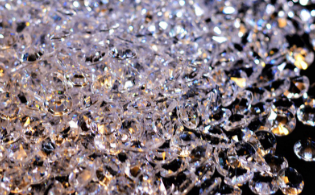
Today, researchers unveil a novel method for growing synthetic diamonds, potentially revolutionizing diamond production. Unlike traditional approaches that demand crushing pressures, this innovative technique offers a gentler alternative. Although the resulting crystals are currently limited in size, about 100 nanometers across, experts anticipate future advancements enabling the creation of larger crystals and coveted extended diamond films prized for advanced electronics and optics.
Diamonds
John Ciraldo, specializing in diamond growth at WD Advanced Materials, praises the method’s ingenuity, envisioning the possibility of producing larger single crystals. Stephen Goodnick, an electrical engineer at Arizona State University, echoes this sentiment, highlighting the significance of larger crystals for advanced electronic devices.
Diamond, a manifestation of pure carbon with tightly bonded atoms in a pyramidal structure, boasts exceptional hardness, radiation resistance, and superior thermal and electrical conductivity. Its applications span diverse fields including quantum computing, high-power electronics, radiation detection, and laser technology.
While natural diamonds form deep within Earth’s mantle under extreme conditions, synthetic diamonds traditionally necessitate replicating these conditions through high-pressure techniques. Rodney Ruoff, a materials scientist at the Institute for Basic Science in South Korea, challenged this paradigm, drawing inspiration from observations suggesting that extreme conditions might not be indispensable.
In their groundbreaking experiment, Ruoff and his team employed a mixture of liquid gallium, iron, nickel, and silicon heated to 1025°C, exposed to methane and hydrogen gases in a small crucible. Remarkably, no seed crystal or added pressure was required. The carbon gas dissolved within the metals, and silicon facilitated the bonding of carbon atoms into diamond structures.
The researchers’ findings, published in Nature, demonstrate the feasibility of producing diamond films comprising numerous tiny crystals. While conventional methods like chemical vapor deposition can also produce such films, they often entail higher costs and yield crystals that may compromise electronic device performance. Ruoff envisions further refinement of the technique to produce ultrathin films consisting of a single layer of pure diamond.
As laboratories worldwide adopt this innovative approach, Ruoff anticipates a surge in experimentation with this “easy-bake” recipe for diamonds. With the potential for significant advancements on the horizon, the future of diamond production appears brighter than ever.